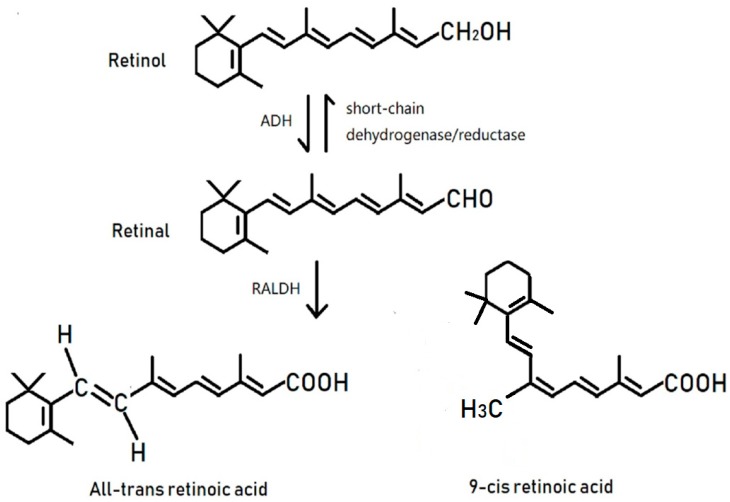Figure 1.
Transformation of retinol into bioactive retinoic acid involves a two-step oxidative reaction. To do this, a group of enzymes, divided in three families, will act together to form the final compound retinoic acid (RA). Retinol transforms into retinal under the catalytic action of the alcohol dehydrogenase (ADH) family; this step can also be regulated by the short-chain dehydrogenase/reductase family, which shows a wide affinity for alcohols and aldehydes. The aldehyde dehydrogenase (RALDH) family then catalyzes retinal to form retinoic acid. Both of the oxidation reactions transmit electrons through the electron acceptor NAD or NADP.

